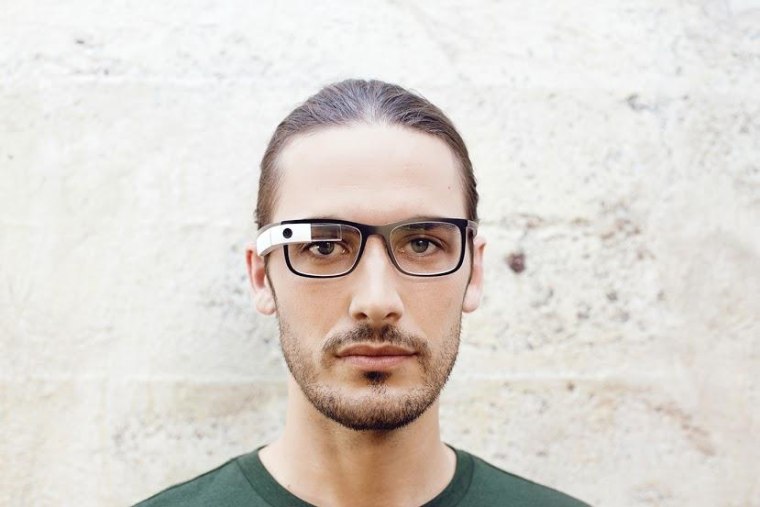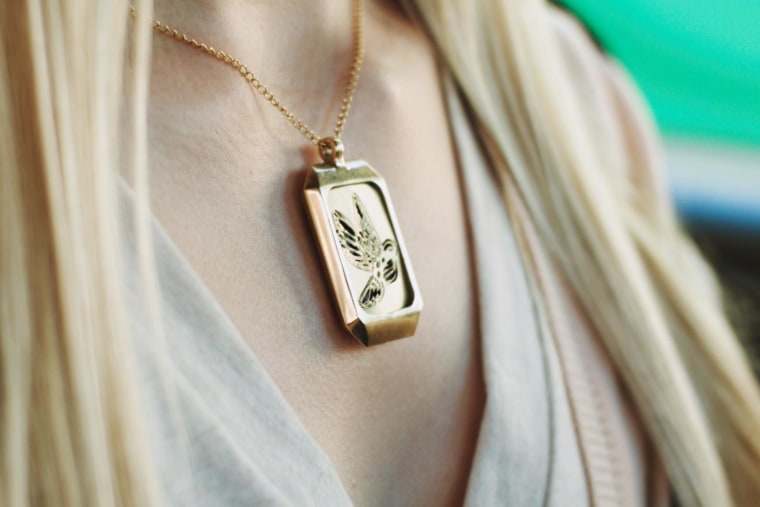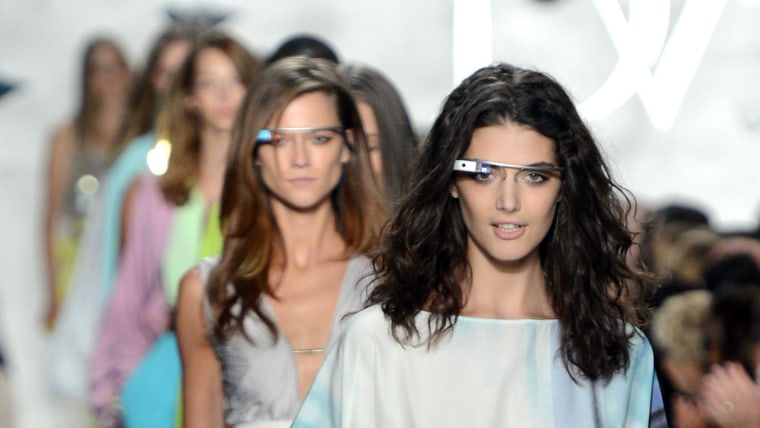From Google Glass to smart watches, the tech industry is pushing connected clothing and accessories as the next big thing. The problem? Technology is only wearable if people actually want to wear it.
Francesca Rosella of CuteCircuit wants to change that. Earlier this month, she anxiously watched her models walk onto the runway at Mercedes-Benz Fashion Week. She had given them the power to customize their outfits with a swipe of their iPods, which caused the garments to do things like shimmer, change color, and even play video.
“Everything in our life is completely digital,” Rosella, an Italian designer who got her start at Valentino, told NBC News. “So why does fashion seem like it’s stuck in the Middle Ages? The most advanced technology on most designs are Velcro and zippers.”
Before the show, she said, one of the models did not realize there was something special about her skirt – a testament to how deftly Rosella incorporates micro-LED lights into her designs using conductive nylon ribbon that eliminates the need for wires. Batteries are disguised as buttons or clasps. The end result is garments made from traditional fabrics like silk chiffon and cotton that can be washed like their non-connected counterparts.
Other designers are toying with technology as well. Opening Ceremony, the ultra-hip label based in New York’s Soho, announced that it was collaborating with the Council of Fashion Designers of America (CFDA) and Intel on a smart bracelet that will eventually be sold at Barneys. In January, Pebble finally released a smart watch that won't look terrible with a suit. That same month, Google Glass, that ultimate symbol of conspicuously geeky consumption, got a hipster makeover.
"Our team is comprised of folks who don’t have a tech background and I think that’s a big strength," Isabelle Olsson, lead industrial designer for Google Glass, told NBC News about creating the new Titanium Collection. "We have our roots in lifestyle products and that helps us remember not to get too focused on the technology alone."

The wearables market is set to skyrocket from $1.4 billion in 2013 to $19 billion in 2018, according to forecasts by Juniper Research. The Mobile World Congress in Barcelona was full of smart wristbands, most of them focused on fitness, like the Samsung Gear Fit and Sony SmartBand. Eventually, however, wearables will have to match something other than track pants and running shorts to become a part of our everyday lives.
There are plenty of people looking to fill that gap. Memi is a smart silver bracelet that will let users know when someone in their pre-set social circles is calling their iPhone, Android, or BlackBerry. Cuff is working on brass jewelry that, when tapped once, will send a distress signal and location information to the wearer’s loved ones. (A double tap can be customized to send a message like, “On my way home!” to a significant other).
“There were was nothing around that my friends or I would wear,” Deepa Sood, a former vice president of product at Restoration Hardware and Cuff co-founder, told NBC News. “The long-term vision is to have a jewelry aesthetic for every kind of wearable.”

Jeff Halmos, one part of the award-winning label Shipley & Halmos, was approached by the CFDA and eBay to create a USB cable bracelet that was released last fall. Despite creating a designer wearable, Halmos, who describes his style as "classic," doesn't see them taking off in the fashion world until designers find a way to incorporate them in a way that puts the integrity of the design — not the wow factor of a new technology — first.
"I think there's a fine line when it comes to wearable technology," he told NBC News. "When it's forced, you can tell."
